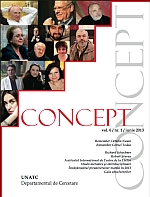911, Artă de avangardă?
9/11, avant-garde art?
Author(s): Richard SchechnerSubject(s): Cultural Essay, Political Essay, Societal Essay
Published by: Universitatea de Teatru si Film »I.L. Caragiale« (UNATC)
Keywords: 9/11 attacks; World Trade Towers; Terrorism; second Iraq War; sublime work of art; good art/bad art; avant-garde art; Karlheinz Stockhausen
Summary/Abstract: Almost as they were occurring, the 9/11 attacks were marketed as popular entertainment. The TV presentations of the 9/11 attacks soon took on the qualities of a made-for-TV drama series. Each of the networks found a melodramatic title for their coverage of the attacks and the consequent events. The program titles, the style of presenting the news, the sequencing of advertising and news items, showed how television, more than the other media, marketed 9/11 and the second Iraq War as a made-for-television series. When on September 16 avantgarde composer Karlheinz Stockhausen called the destruction of the World Trade Towers: „The greatest work of art imaginable for the whole cosmos” his remark was greeted by rage and disgust. Was the attack art? Or was it just using strategies adapted from art? I believe that the attack can be understood as the actualization of some key ideas driving a lot of avantgarde art. The attack was in direct succession to anarchist and futurist actions and manifestos. 9/11 was „bad art” in the ethical and moral sense, „illegal art” from the point of view of American law. Is this kind of analysis perverse, doing dishonor to the dead and injured? Does it grant the jihadists much more than they deserve? Terrorism, at the scale of 9/11, works like art more on states of mind and feeling than on physical destruction. Or, if you will, the destruction is the means toward the end of creating terror, which is a state of mind.
Journal: Concept
- Issue Year: 6/2013
- Issue No: 1
- Page Range: 1-24
- Page Count: 24
- Language: Romanian

